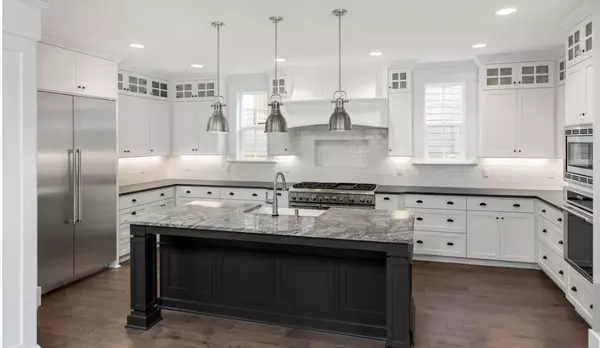
Successfully Selling Your Luxury Home
If you’re planning to take your luxury home to market, it takes working with the right team, from a skilled luxury real estate agent, a thoughtfully crafted marketing plan, an expert stager, and a professional photographer, to name a few. Listing a luxury home is slightly different than a mid-range home, as it’s a smaller, more discerning buyer pool. The home needs to be tailored thoughtfully to these buyers, and the marketing efforts need to showcase the experience of living in the home instead of simply staging the home’s features. Read on for ways to successfully sell your luxury home. Partner With a Luxury Selling ExpertWorking with a luxury real estate agent is the first step to selling your luxury home successfully. This professional should have proven experience in your local luxury market and can create a customized marketing plan to showcase your house. Craft a Carefully Researched Offer PriceOnce you find a real estate agent with experience and knowledge of the local luxury real estate market, crafting the offer price is essential. Crafting the offer price can be more difficult for a luxury home since there aren’t as many comparables as a mid-range home. If the home is priced too low, you won’t get what you deserve for the property; alternatively, if it’s too high, it can sit on the market too long, ultimately making it more difficult to sell. Create ExclusivityRegardless of the type of home, open houses can attract many visitors who are simply curious about the house. This curiosity peaks even more so with luxury homes. Creating exclusivity around your home is essential to eliminate the curious neighbors and bring in serious buyers. Private showings, broker open houses, and invite-only events showcase your property and bring in the people most inclined to make an offer. These events may include decor, entertainment, catering, and cocktails — all elements of a swanky soiree and can help your home sell. Design a Buyer ProfileThe luxury home buyer profile is specific. Every marketing effort should be designed with this buyer profile in mind. This hyper-specific marketing will reach the buyers who will most likely extend an offer. Your real estate agent’s luxury home selling experience should help craft this profile. Sell the LifestyleLiving in a luxury property implies that the home affords a particular lifestyle. Highlighting this lifestyle in the staging efforts can help buyers envision themselves living there. Staging the home in a way that tells a story, such as setting the outdoor dining table, lighting the outdoor fireplaces, and setting out glasses of wine and cozy throw blankets, can help buyers envision themselves hosting in the sprawling backyard. Or, staging the kitchen and dining space with plenty of appetizers, champagne, a curated playlist, and cocktail party accessories can help a buyer imagine their next cocktail party at home. Sweeten the DealTo help your home stand out even more to buyers, consider including some added perks. This will create additional value for buyers. This may mean including the custom sofa in the living room, the custom dining table in the dining room, the custom stools around the kitchen island, or the outdoor furniture set. An aspirational marketing approach to the ideal buyer will help your home reach the perfect buyer for your property.

Coastal Home Decor Without Kitsch
Whether it’s your lake house or primary residence, you may gravitate towards coastal-inspired home decor as the summer is in full effect. From crisp blues and whites to stripes, rattan, jute, and other natural fibers, coastal home accents can make every day feel like a beach getaway. However, the design scheme can soon veer into coastal kitsch if you overdo the coastal accents. If you like the breezy blue and white feel, remember these design tips to create a coastal-inspired space without overdoing it. Capture the SceneryEvery coastal home has the same exterior elements: water, greenery, and sometimes the neutral hues of sand. Creating an interior design scheme based on the blues from the water and sky, whites from the clouds, green from the landscaping, and neutrals from the sand will instantly create a coastally-inspired foundation in your home. Below are some ways to incorporate these elements throughout a house: White walls and sofas Blue and white striped accent chairs Neutral, natural fiber rugs, accent tables, seating options, home decor accessories Blue and green decor accessories Natural greenery Highlight the Natural LightOne of the best design elements in a home is the amount of natural light it receives. In a coastal-inspired home, abundant natural light will help create the most realistic indoor-outdoor living environment. Skylights, floor-to-ceiling windows, glass doors, sidelights, and transoms are all ways to maximize the amount of natural light that floods a space. Additionally, removing any landscaping that blocks the windows and selecting light, breezy drapery panels and woven Roman shades will provide privacy while creating a lightened-up and open feeling. Include Subtle Nautical ElementsThere are subtle ways to incorporate coastal or nautical accents without filling your home with anchors and seashells. Millwork detailing, such as shiplap on the ceiling or bead board as a backsplash; metal finishes with a patina, such as antique brass; and shades of wood in rich walnut or pale oak, are all design elements that give a nod to a nautically inspired space. Avoid Cliche Nautical AccessoriesCliche nautical accents such as anchors, oars, word art, and an overabundance of shell decor can take a subtle coastal design scheme too far. Eliminating these pieces in favor of more meaningful items like framed family lake memories, historical photos of the area, pieces from your coastal travels, and any other sentimental items will create a unique, relevant, and understated coastal kitsch-free space. Focus on ComfortComfort should be the ultimate design factor in a coastal home. One of the top ways to create a comfortable space is to ensure everyone can relax and not worry about messes and spills. Performance fabrics, indoor outdoor rugs, wipeable surfaces, and textiles that can easily be washed are the foundational pieces of a relaxed and carefree atmosphere. FYI Kitsch= something that appeals to popular or lowbrow taste and is often of poor quality

Top Tips for Designing a Functional Laundry Room
Taming the laundry beast can be a difficult task in any household. This is especially difficult if you have an unorganized or dysfunctional laundry room. Creating an organized space is essential to making laundry a less dreaded and time-consuming task, and upgrading your laundry room can be both an investment in your home value and an improvement in your daily life. Prioritize StorageAmple storage is key for a functional laundry room. Easily accessible cabinets and shelving units are essential; opt for more than you think you may need. You will certainly need to access and store laundry essentials like detergent, stain remover, dryer balls or sheets, as well as laundry maintenance supplies. Ideally, you should have room to store extra linens, ironing supplies, and extra laundry baskets. Don’t stop planning for storage after making room for these vital items, however. Truly organized spaces have a buffer of room for additional items if needed down the road. Opt for Space-Saving OptionsWhile a well-organized laundry room requires you to create dedicated storage, a functional laundry room does not require ample space. Using creative space-saving options can allow you to create a laundry zone without taking up highly-coveted square footage. Opt for space-saving solutions like stackable washer and dryer units, back-of-the-door laundry bins, and wall items that take advantage of vertical storage. Think of the “Nice-to-Haves”Practically speaking, there’s more to doing laundry than tossing clothes in the washer and dryer. Arranging your laundry room to accommodate every aspect of your chores will ensure you are creating manageable tasks whenever laundry needs to be done. Incorporating a countertop for folding clothes, a sink for hand-washing and pre-treating stains, along with installing a wall ironing board, and a wall rack for air-drying clothes can all serve to make laundry a breeze. You’ll thank yourself later, and whenever you are ready to sell, these additions can be a great feature that will excite potential buyers. Focus on ErgonomicsA well-designed space is created with ergonomics of use in mind. Making laundry a comfortable chore to tackle will ensure that you are keeping up with the job and will ensure your laundry room has the best ROI possible. Simple tips can help: Raise front-loading washers and dryers on pedestals to reduce bending. Ensure all frequently used items are within easy reach. Place a cushioned mat in front of the folding area to reduce strain on your feet.
Categories
Recent Posts










